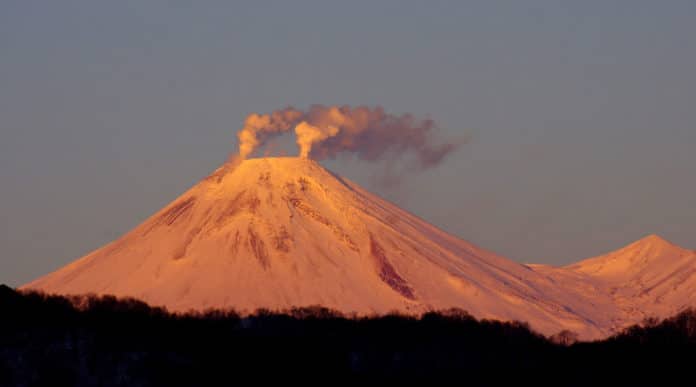Most volcanoes form at the boundaries of Earth’s tectonic plates. They are originated from clashes between those giant slabs of rock as they drift on top of the mantle layer between Earth’s core and crust.
However, volcanoes sometimes erupt in the middle of tectonic plates. The sources of these hotspots might be mantle plumes, mushroom-shaped pillars of hot rock ascending from the deep mantle to sear overlying material like a blowtorch.
As tectonic plates wander over such plumes, geologists think chains of volcanic isles can emerge.
A new study suggested that the Hotspots that created volcanic islands may often prove surprisingly cool. Such hotspots may not continuously erupt from giant plumes of scorching hot rock welling up from near Earth’s core as previously thought.
Previous studies have reported that the temperature of volcanic hotspots are roughly hotter than mid-ocean ridges, almost 100 to 300 degrees Celsius (180-540 F). Inside the mid-ocean ridges, magma rises as tectonic plates spread apart underwater. This supported the view that hotspots were heated by matter near Earth’s hot core and mid-ocean ridges by cooler mantle rock.
This study found that many hotspots are dramatically cooler than previously thought. This raises questions about their origins.
Vedran Lekic, a seismologist at the University of Maryland, College Park, said, “A substantial fraction of hotspots does not fit the classical plume model.”
Scientists analyzed the velocity of seismic waves rippling through the mantle underneath oceanic hotspots and ridges. Through this, they estimated temperatures at those sites.
Almost 45% of hotspots are more than 155 C (279 F) hotter than mid-ocean ridges. However, about 40% are only 50 to 136 C (90-245 F) hotter than mid-ocean ridges- not specifically hot and hence not buoyant enough to support the active upwelling of rock from the deep mantle. Also, roughly 15% of hotspots are cold, only 36 C hotter or less than mid-ocean ridges.
To get more details on the origins of these different varieties of hotspots, scientists examined the ratio of rarer helium-3 to more common helium-4 in their rock.
Scientists found that hot hotspots possessed a much higher ratio of helium-3 to helium-4 than cold hotspots did.
Study co-author Carolina Lithgow-Bertelloni, a geodynamicist at the University of California, Los Angeles, said, “Although the classic model of hotspots originating from plumes welling up from the deep mantle may explain hot hotspots, including most of the famous ones, such as those underlying Hawaii, Iceland, the Galapagos, Samoa, and Easter Island, perhaps the truth is that only a few hotspots truly behave like our classical model of mantle plumes and hotspots.”
Seismologist Ross Maguire from the University of New Mexico said, “This reinforces what some researchers have argued previously, which is that the term ‘hotspot’ is misleading and that volcanoes that don’t fit the plate tectonic paradigm should rather be referred to as ‘melting anomalies.”
Bernhard Steinberger, a geodynamicist at the German Research Center for Geosciences in Potsdam, said, “Cooler hotspots may instead originate in the upper mantle, or from slow-moving deep plumes that have more time to cool, or from deep plumes that interact with and get cooled by swirling mantle rock.”
“If this is real, it will be a challenge for geodynamics to explain such a finding. These results will doubtlessly trigger new research.”
Steinberger said, “This work “points to a much greater variety among plumes. It is kind of like whenever you get a new close-up view of a planet or moon. It has some unexpected features. But it is still around.”
Lithgow-Bertelloni said, “In the future, the scientists would like to analyze every hotspot in more detail to get an even better sense of their temperatures.”
Journal Reference:
- XIYUAN BAO et al. On the relative temperatures of Earth’s volcanic hotspots and mid-ocean ridges. DOI: 10.1126/science.abj8944
